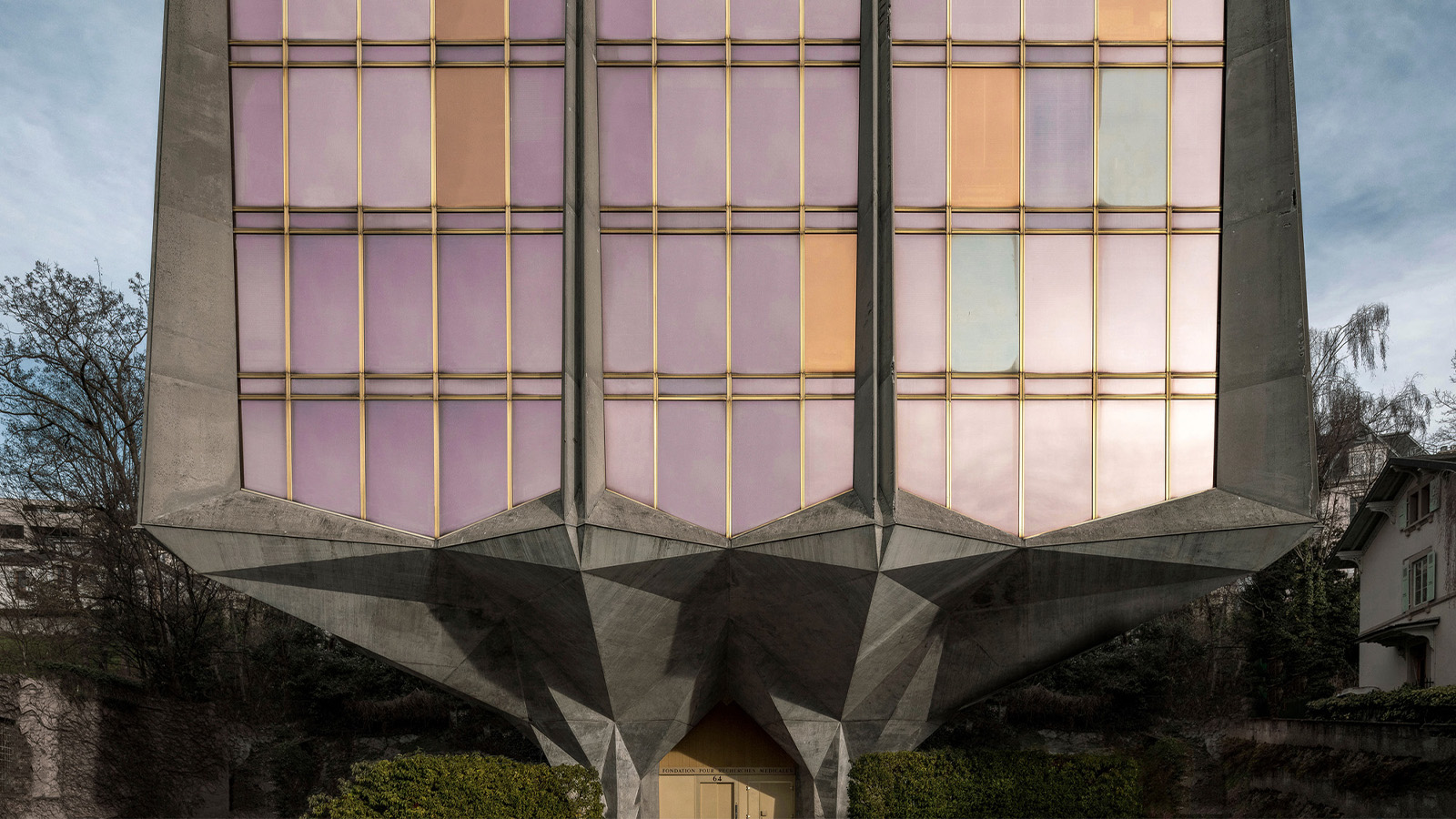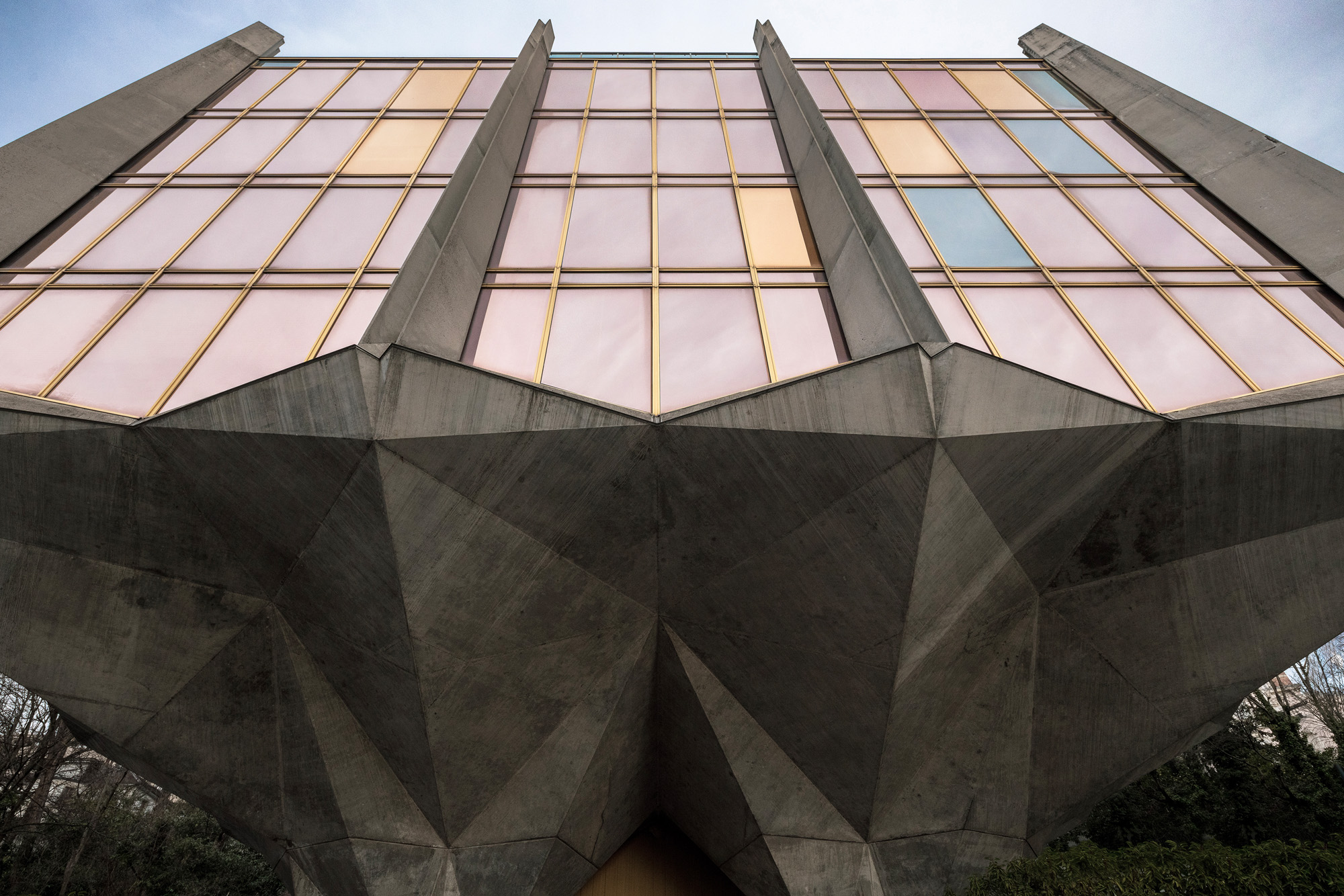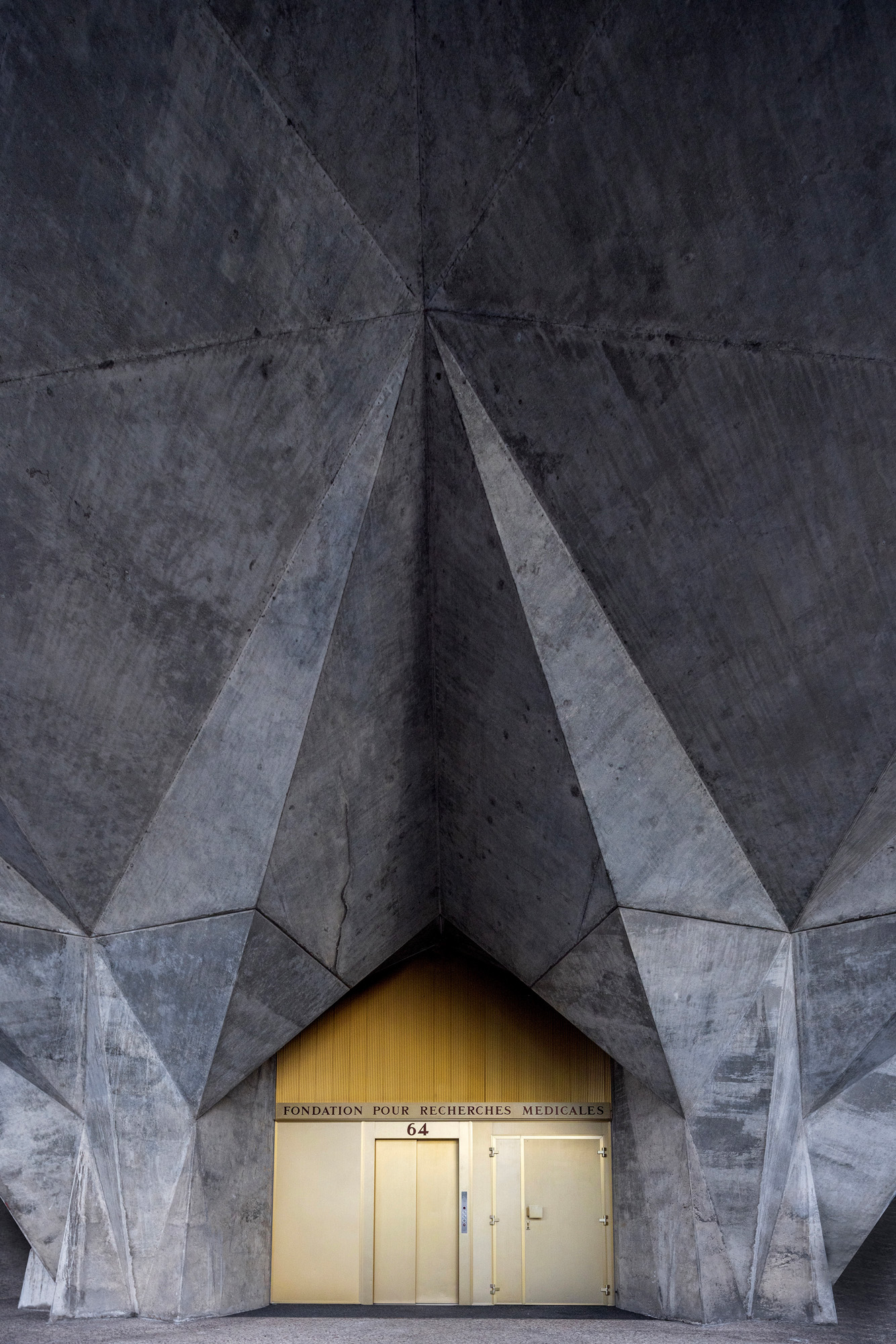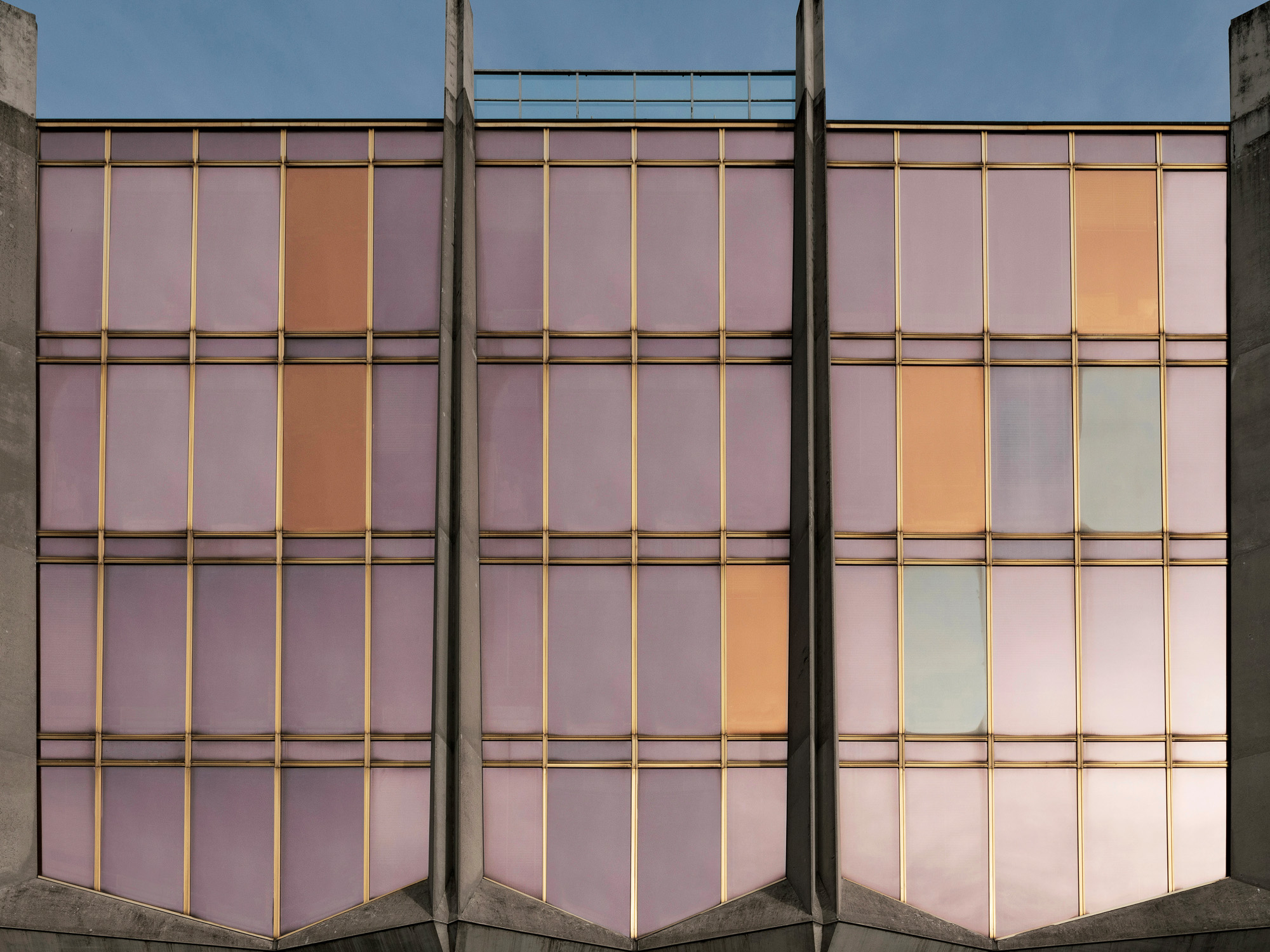
Tucked between the extensive campus of Geneva’s University Hospital and a huddle of associated medical institutions, laboratories and surgeries, the Avenue de la Roseraie is trod by few casual visitors to the Swiss city. And yet here – out of sight in a small car park – is an extraordinary structure that, situated elsewhere, would surely draw the attention of architectural students like bees to a nectar-rich flower. Horticulturalists, too, perhaps, for whom a building nicknamed La Tulipe might well incite curiosity.
Sprouting from the ground in the guise of a faceted concrete stem, the building opens up and out, like a surreal architectonic flower, shedding weight as it rises, its core supported and shielded by filigree and tapering concrete ribs. Between the ribs, sheets of candy-coloured glass add to a sense of unfamiliarity reinforced by La Tulipe’s enigmatic entrance, an anodised bronze door offering no view inside. Incised above, in capitals, it says, ‘Fondation Pour Recherches Médicales’. Hint enough. Here is a shrine to medical research to which casual visitors are not invited unless they hold the key. Inside, a lift rises through three floors, each accommodating a cluster of laboratories facing out through those delicately framed tinted window petals.

The story behind La Tulipe by Jack Vicajee Bertoli
The interior is purposeful and matter-of-fact. An idle thought that La Tulipe might make a rather special boutique hotel dissipates once you appreciate that this is a busy research centre that has worked closely with the university hospital and medical faculty ever since its completion in 1976.
Its architect, Jack Vicajee Bertoli (now 93, living partly in Geneva and partly on the Catalonian coast), insists the design is purely a matter of form following function. ‘To be a success, it had to be near, if not physically attached to, the hospital, but there was no land available, except for a very small plot on a steep slope, whereupon the idea of a more upright structure was born. It fulfilled a request.’
However, the building is far more imaginative than that, reflecting the richness of Bertoli’s upbringing and experience. Born in Mumbai in 1931, Bertoli is the son of Italian designer Fausto Piscionieri and Kitty Vicajee, an Indian Zoroastrian Parsi whose second husband, Giovanni Bertoli, was an Italian naval air officer. Mother and son lived for some years with Kitty’s sister Thelma, who was married to Franco-Indian business tycoon Jehangir Tata. Through the Tatas, Bertoli got to know Jawaharlal Nehru, first prime minister of independent India, his daughter Indira, India’s first woman prime minister, Muhammad Ali Jinnah, founder of Pakistan, and Mahatma Gandhi. Young Jack was, you might say, well-connected.

Taught by Spanish Jesuits at St Mary’s High School in Mumbai, Bertoli moved on to the International School of Geneva and then to Princeton to study architecture (Louis Kahn and Buckminster Fuller were among his teachers). Following spells in the offices of Marcel Breuer and Eero Saarinen, Bertoli then worked with the Ford Foundation in New Delhi on a new masterplan before joining Le Corbusier and Pierre Jeanneret on the design of Chandigarh.
These creative and social strands wove themselves together when Bertoli became a Swiss citizen, setting up his own studio in Geneva. Among his early clients was Anita Pauling, an alumna of the International School, for whom he designed a house on Lake Geneva. Pauling longed to create a special building for the city. After discussing the possibilities of this with Bertoli, his wife Nelly Roch, a talented decorator and artist, and his brother-in-law, Dr Gaston Zahnd, the founder and first director of the Fondation Pour Recherches Médicales, La Tulipe was born – a distinctive building, with a scientific and social purpose, supported by an enterprising new foundation.

‘I teamed up with civil engineer Claude Huguenin,’ says Bertoli. ‘Everything was hand-drawn. We worked out the geometry and structure in discussions, on paper – no computers, then! – and using scale models in plasticine, wood and terracotta. The glass is not meant to be coloured in the way that it appears now. Originally, it was a silver-bluey-grey, but air has got inside the sealed units and changed it over time.’
La Tulipe is currently undergoing a two-phase renovation, under the guidance of Geneva architects Meier + Associés. ‘We got in touch with Jack Bertoli, which was a really enjoyable experience,’ says project architect Simon Marti. ‘He showed us drawings, photographs and documents relating to the building as originally designed and when newly opened, so we’ve been able to go through the building very carefully to establish how it should look at its best. While bringing its services up to date, we are also reinstating original details, including a bespoke handrail that had been removed from the central stair, and replacing later floor treatments and colour schemes.’

Marti continues, ‘The base of the structure is in good shape, but there is work to be done on the carbonised concrete pillars, and the glass must be replaced to meet new regulations. We are testing colours to see what’s possible, but they’ll be a shade of bluey grey. We’ll also enhance the landscaping. What you’ll see soon is the building as Jack Bertoli designed it.’ It looks like everything is coming up roses for this gorgeously-hued example of Swiss brutalism.
This article appears in the October 2024 issue of Wallpaper*, available in print on newsstands, on the Wallpaper* app on Apple iOS, and to subscribers of Apple News +. Subscribe to Wallpaper* today







